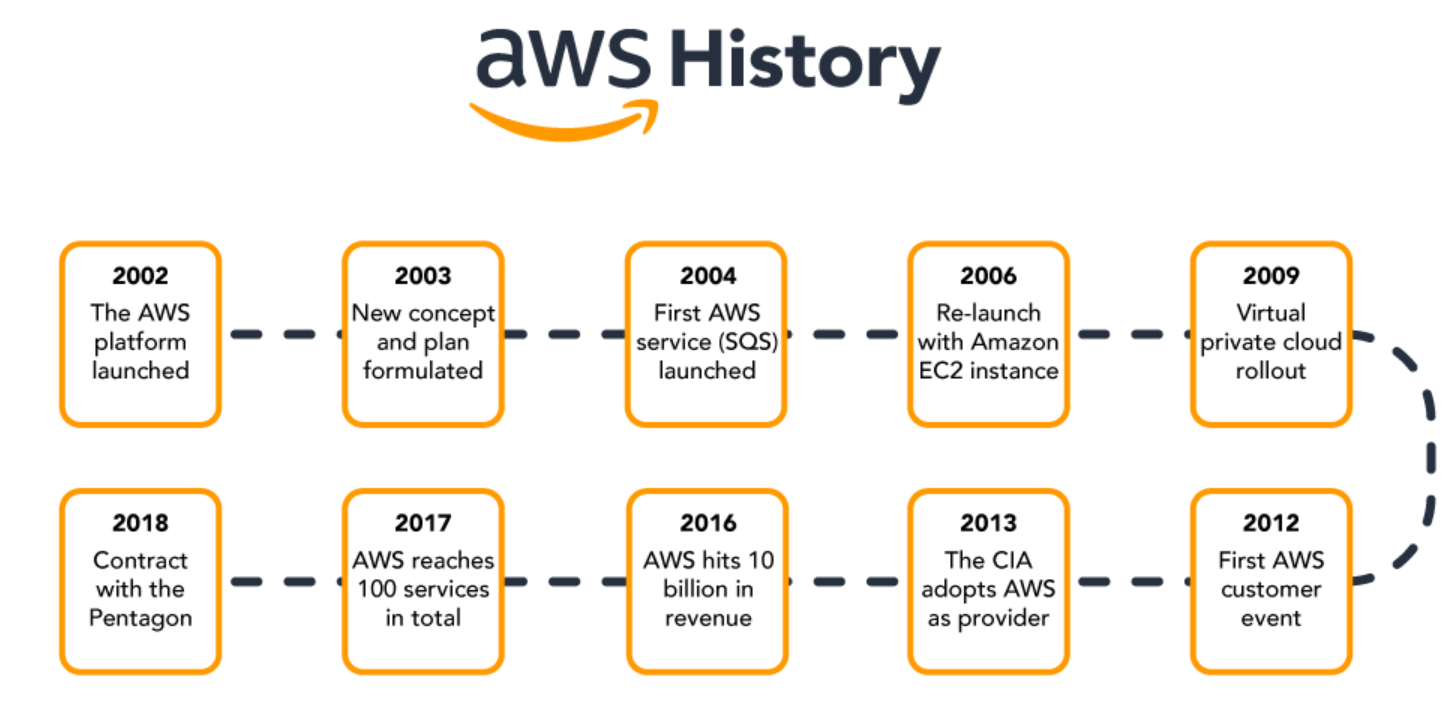Exploring the Evolution and Significance of AWS
 Soumen Bhunia
Soumen Bhunia
Brief Introduction to AWS:
Amazon Web Services (AWS) is a comprehensive and widely adopted cloud platform, offering over 200 fully featured services from data centers globally. Launched in 2006, AWS provides a reliable, scalable, and low-cost infrastructure platform in the cloud, powering businesses of all sizes and industries. From compute power, storage, and databases to machine learning, analytics, and IoT, AWS has become the backbone of modern cloud computing, enabling companies to innovate faster and more efficiently.
Why is AWS so powerful?
Scalability
Global Reach
Comprehensive Services
Security and Compliance
Cost-Effectiveness
AWS's Evolution:
2003: Chris Pinkmanand Benjamin Black proposed Amazon's internal infrastructure as a service.
2004: AWS launched its first service, SQS.
2006: AWS officially launched, targeting Silicon Valley startups.
2007: Over 180,000 developers were using AWS.
2010: All of Amazon.com was on AWS.
2012: AWS held its first re:Invent conference.
2013: AWS certifications were introduced.
2014: AWS aimed for 100% renewable energy usage for its global footprint.
2015: AWS's revenue grew to $6 billion.
2016: AWS reached a $13 billion run rate.
2017: AWS's run rate hit $27 billion, with advancements in AI and machine learning services like Lex, Poly, and SageMaker.
2018: AWS introduced machine learning certificates and had a heavy focus on AI and ML at re.
2019: AWS continued to expand its services, focusing on hybrid cloud solutions with the launch of AWS Outposts.
2020: AWS played a critical role in supporting remote work and digital transformation efforts due to the COVID-19 pandemic.
2021: AWS introduced new services and enhancements, such as Graviton2 processors and improvements in AI/ML capabilities.
2022: AWS announced sustainability initiatives, including new commitments to renewable energy and carbon reduction.
2023: AWS continued to lead in the cloud market, introducing advanced features in areas like quantum computing and edge computing.
2024: AWS maintained its growth trajectory with a focus on AI, machine learning, and sustainable cloud infrastructure, ensuring it remains at the forefront of cloud innovation.

Conclusion:
The history and evolution of AWS showcase its transformative impact on the tech industry. From its inception in 2003 to its leadership in cloud innovation by 2024, AWS has continuously revolutionized how businesses operate, offering scalable, cost-effective, and sustainable solutions. By leveraging AWS, startups and enterprises alike can experiment, innovate, and grow without the traditional constraints of physical infrastructure. Learning AWS equips you with the skills to meet the increasing demand for cloud expertise, positioning you for a successful career in a rapidly evolving digital landscape.
Subscribe to my newsletter
Read articles from Soumen Bhunia directly inside your inbox. Subscribe to the newsletter, and don't miss out.
Written by

Soumen Bhunia
Soumen Bhunia
Hi, I'm Soumen Bhunia! An aspiring AI & ML enthusiast passionate about cloud computing. I'm dedicated to mastering new technologies and sharing insights. Join me on my tech journey exploring cryptography, security, and innovative ML solutions. Let's learn and grow together!